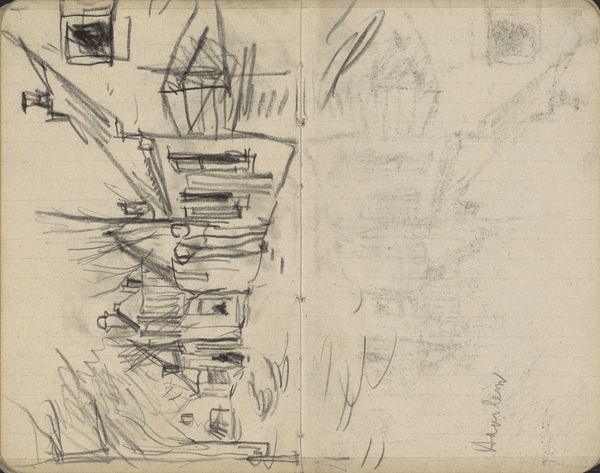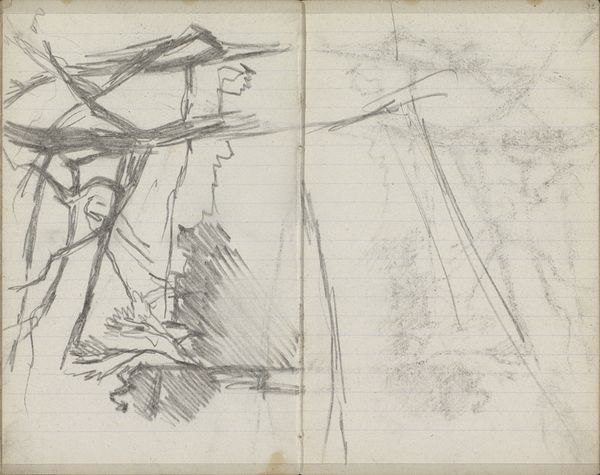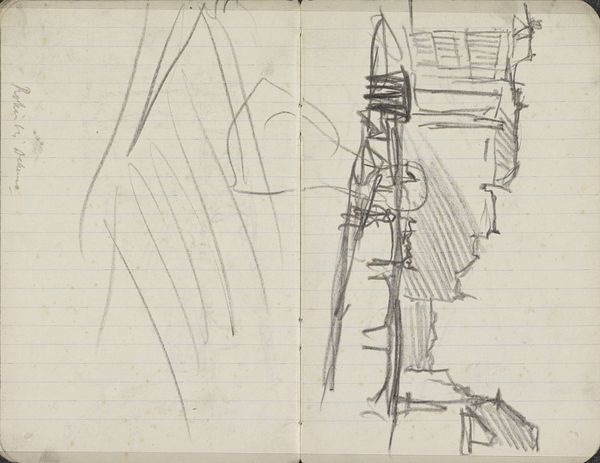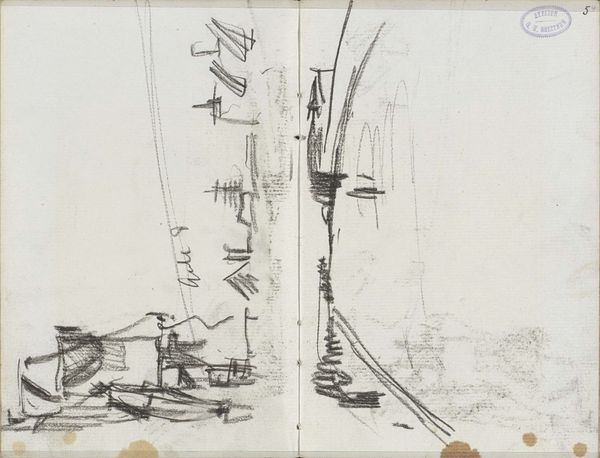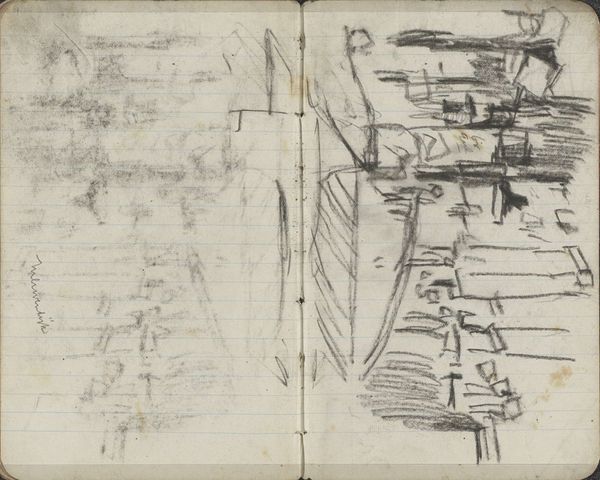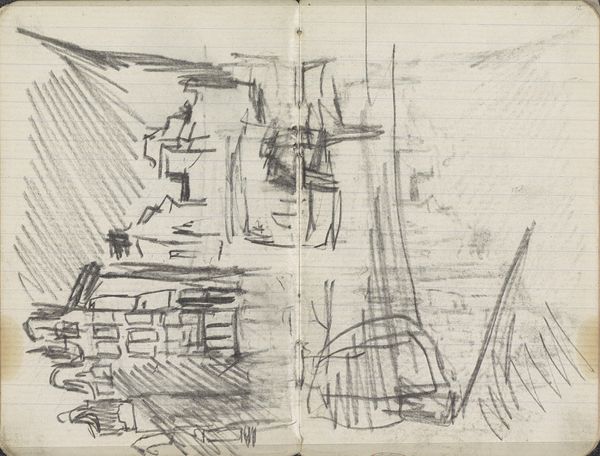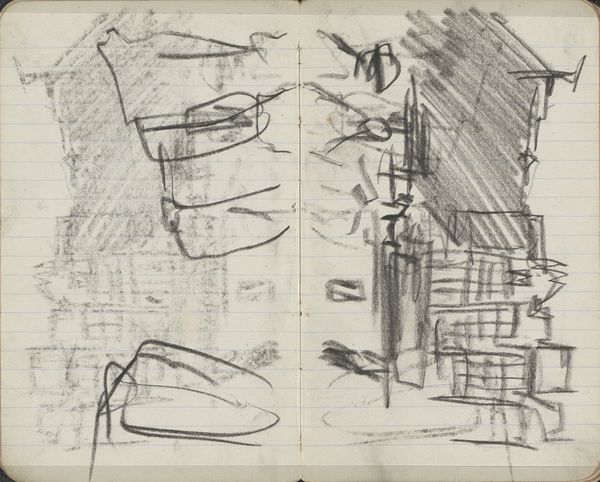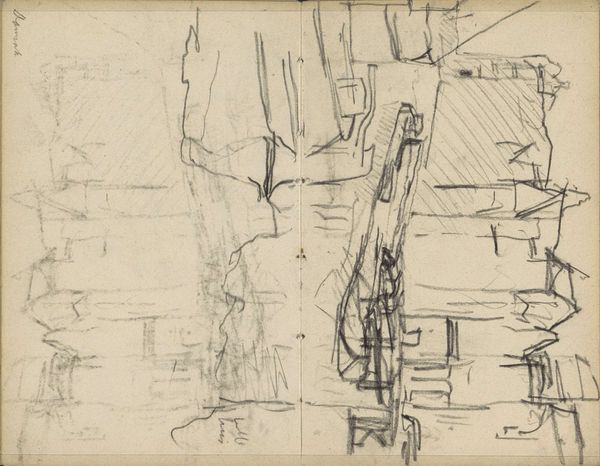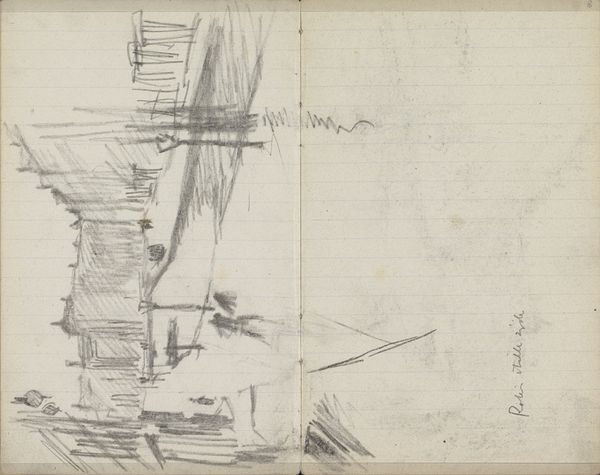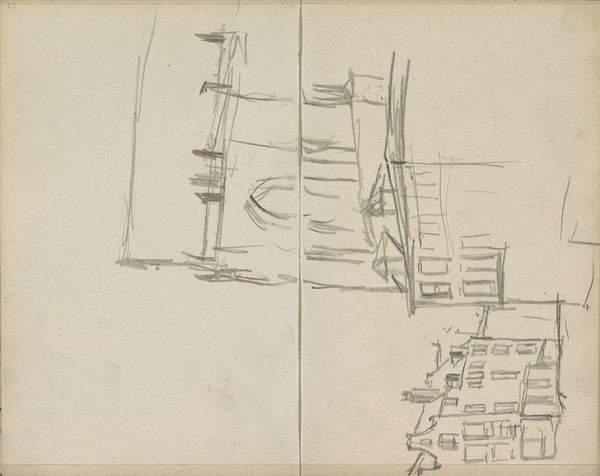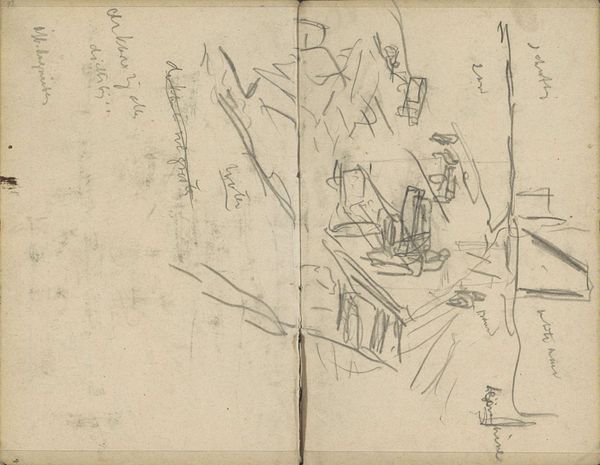
Copyright: Rijks Museum: Open Domain
Curator: Here we have a pencil drawing by George Hendrik Breitner, dating to around 1894, titled "Pui van een winkel op de Nieuwendijk te Amsterdam"—literally, "Front of a shop on the Nieuwendijk in Amsterdam." Editor: The quick strokes immediately give a sense of bustling city life. There's something almost ghostly about it too. Like looking at a memory fading. Curator: Absolutely. Consider the material. It's a fleeting medium—pencil on paper—perfect for capturing the ephemeral nature of the modern cityscape. Breitner was known for his photographic eye, but here we see a different kind of observation, mediated through the hand, a translation of sensory experience onto the page. We get a strong sense of process, of the artist actively selecting, interpreting, and sketching what is there. Editor: It is more than observation though. To me, there's the subtle symbolism inherent in a storefront. It is a threshold, a transition between the public sphere of the street and the private realm of commerce and consumption. Note the almost abstracted lettering—it evokes signage, a crucial element in a commercial setting designed to draw people in, whispering promises of what awaits within. Curator: Fascinating point. Looking at the street, at the arrangement of forms, I think of how he captured the everyday labor inherent in urban trade. Not a glorification, but documentation, as the city evolves with commerce at its heart. What might appear haphazard—a seemingly rough sketch—shows careful arrangement. Note the horizontal lines giving a strong foundation on the flimsy notebook paper. Editor: True. The rough quality contributes to its authenticity. There's no attempt to idealize Amsterdam. This reminds us of how integral these bustling street corners were in the creation of a Dutch national identity, forged from mercantilism. The rapid strokes also mimic how the news was circulated through the city. Every poster and conversation contributed to shaping the stories. Curator: I agree. The image's power lies in the immediacy with which Breitner records a scene from the burgeoning city. In that moment he shows the materials from which our urban reality is made—social transactions, exchanges, economic movement caught on a quickly fading sheet of paper. Editor: It seems we both share the perception of ephemerality but come to it from slightly different approaches. We may forget that the streetscape isn't just steel and brick, but stories, dreams, and quick pencil strokes quickly captured in history.
Comments
No comments
Be the first to comment and join the conversation on the ultimate creative platform.

